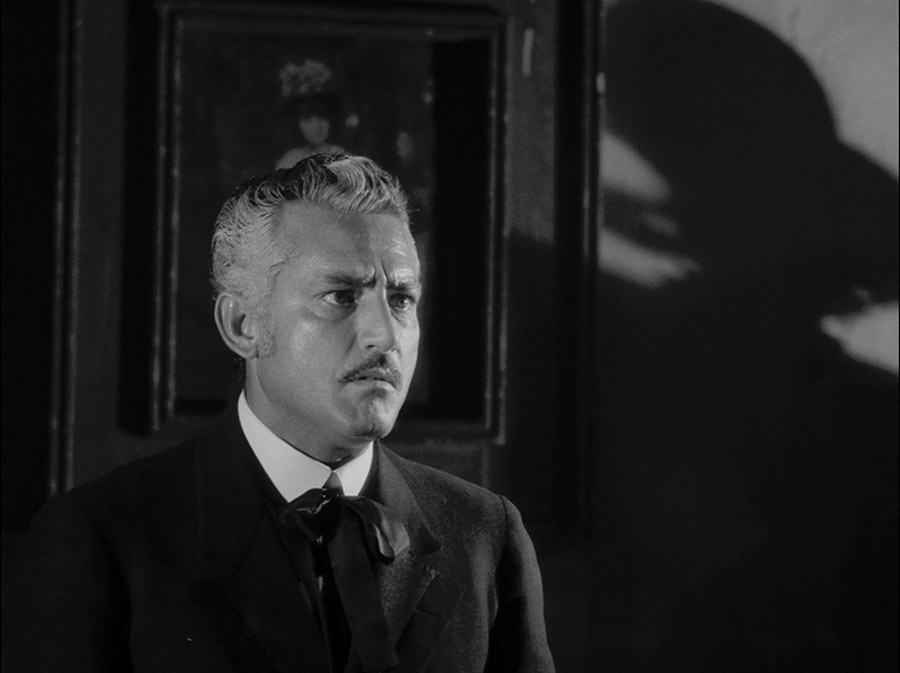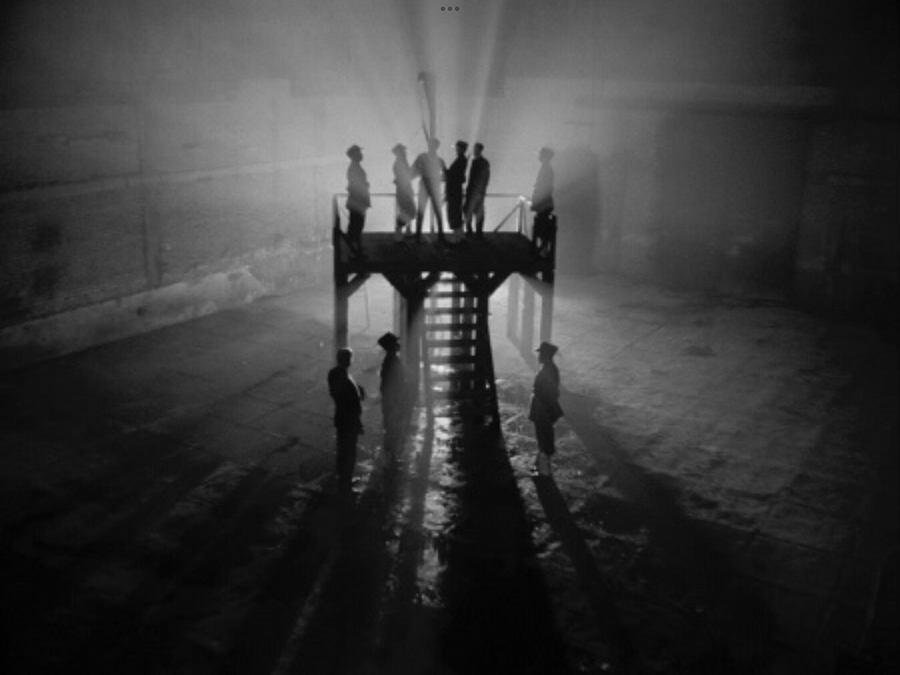THE BLACK PIT OF DR. M
Directed by Fernando Méndez. 1959. Mexico.

“The one who dies first must find the way, so the other one can go and come back from the other world without dying.”
That’s the pact made between two scientists, Dr. Mazali, the head of a sanitarium, and his dying colleague, Dr. Aldama. After the funeral, they contact Dr. Aldama’s spirit through a seance, and he confirms their hypothesis. There is, in fact, a way to go to the afterlife and come back without dying, but not without paying a horrible price. Before returning to the spirit world, Dr. Aldama sets a date and a time. Three months from now. 9 in the evening. “A door will close”, he says, and the experiment will conclude. Dr. Mazali will finally have all the answers his pride demands.
Meanwhile, a beautiful woman named Patricia spots a man in the crowd as she dances onstage at a cafe. She seems frightened of the man, so much so that she immediately quits and starts packing her bags. Patricia is the daughter of Dr. Aldama. Not that she knows that, as he had abandoned her and her mother when Patricia was young. So when Dr. Aldama’s ghost makes an appearance at her home later that night, telling her that he has come to deliver her father’s last will to her, she doesn’t think anything of it. She’s never even seen his face. The ghost tells her of a key hidden in her mother’s locket and instructs her to visit Dr. Mazali.
That key opens a box in Dr. Aldama’s old room. Inside is Patricia’s birth certificate, some jewelry, and a letter opener bearing an ominous inscription: “May the fire of hell consume the one who uses me for evil.’ Patricia asks to see a picture of her father. Upon seeing the face of the man who visited her home the other night, she faints, collapsing in a heap on the floor.

Patricia meets another man at the sanitarium, a newly hired doctor arriving for work. She has definitely seen this man before. He’s the one she ran from at the cafe. The man, Eduardo, tells Patricia that he has been dreaming of her for quite some time, which would sound like an awful pick-up line were it not for the fact that she has been dreaming of him, too. That’s why she ran, and who can blame her? Things have been bizarre lately.
There’s also the nasty business of a violent psychotic at the sanitarium, a woman they call the Gypsy, who has recently smashed a bottle of acid over an orderly’s face. That orderly, Elmer, isn’t taking his newfound facial disfigurement well, running off into the night to hide. To the great pleasure of both Eduardo and Dr. Mazali, Patricia decides to stay at the sanitarium and train to be a nurse. Both men have fallen madly in love with her. Unfortunately for Dr. Mazali, the feeling isn’t mutual. Patricia only has eyes for Eduardo. Not that we’ll have much time for melodrama. The Gypsy has just broken out of her room, and Elmer has set his mind on bloody revenge. Oh, and it’s been three months, and the clock on the wall reads 8 pm. Buckle up, folks, this is going to be a night to remember.
THE BLACK PIT OF DR. M comes to us courtesy of Fernando Méndez, one of the premier Mexican horror directors of the 1950s. It is easily one of the best examples of the Mexican Gothic, a deeply moralistic and tragic brand of Expressionist horror that had far more in common with Hammer than American International Pictures. The original Mexican title for the film was MYSTERIES OF THE AFTERLIFE, which is way more fitting but also far less salacious. I suppose a punchier title was needed for export purposes, as THE BLACK PIT OF DR. M takes its good, sweet time getting the engine running.

For much of its running time, THE BLACK PIT OF DR. M is far more concerned with atmosphere and dread than it is with broad narrative momentum. The visual style is beautifully baroque and highly evocative. After receiving the message at the seance, the wind begins to pick up, and the shadows flicker and dance, almost as if something has taken immediate effect over the natural world. Méndez peppers his film with surrealist touches, superimpositions, and striking compositions, such as the shots of disembodied arms reaching through the gaps in the cell doors, the hands clawing at the air as the shrieks of the inmates blend with the blasting horns and crashing timpanis of the score, creating a cacophonous, chaotic soundscape. There are also some showstopper scenes, like a man emerging from a grave in a fog-drenched graveyard during a thunderstorm, and a haunting execution at a gallows that can easily stand shoulder to shoulder with the best moments Universal had to offer.
When we are focusing more on the story than the knock-out visuals, THE BLACK PIT OF DR. M is no less of a slouch. The story isn’t revolutionary. It’s your basic Faustian cautionary tale, albeit one that feels ripped right out of an EC comic. Scientific hubris and the inevitable downfall it brings are at the heart of the film (this is a 1950s horror movie with a light scientific bent, after all), but it isn’t all stand-by 1950s tropes and cliches. In between the whole ‘science intruding on matters of faith’ stuff, there are thoughts on the metaphysics of souls and afterlives, eternal damnation, and the value of life itself. And while all of that is going on, you have a whole Rube Goldberg machine of coincidences and conveniences pulling together all of these disparate strands of narrative. At first glance, it all seems comically implausible, but then the credits start to roll, and with the whole picture in mind, you begin to retrace your steps. That’s when you realize just how beautifully and elegantly this was all put together.
THE BLACK PIT OF DR. M is one of the finest horror films of the 1950s, if not one of the finest horror films of all time. While it isn’t particularly frightening, it is, nonetheless, disquieting and creepy, slowly working its way under your skin until you can no longer ignore the itching feeling that something is terribly wrong. The finale is a showstopper, featuring a full-body burn and the kind of delicious irony you typically only get from an EC comic tale or an especially great episode of The Twilight Zone. An easy recommendation for lovers of classic horror.